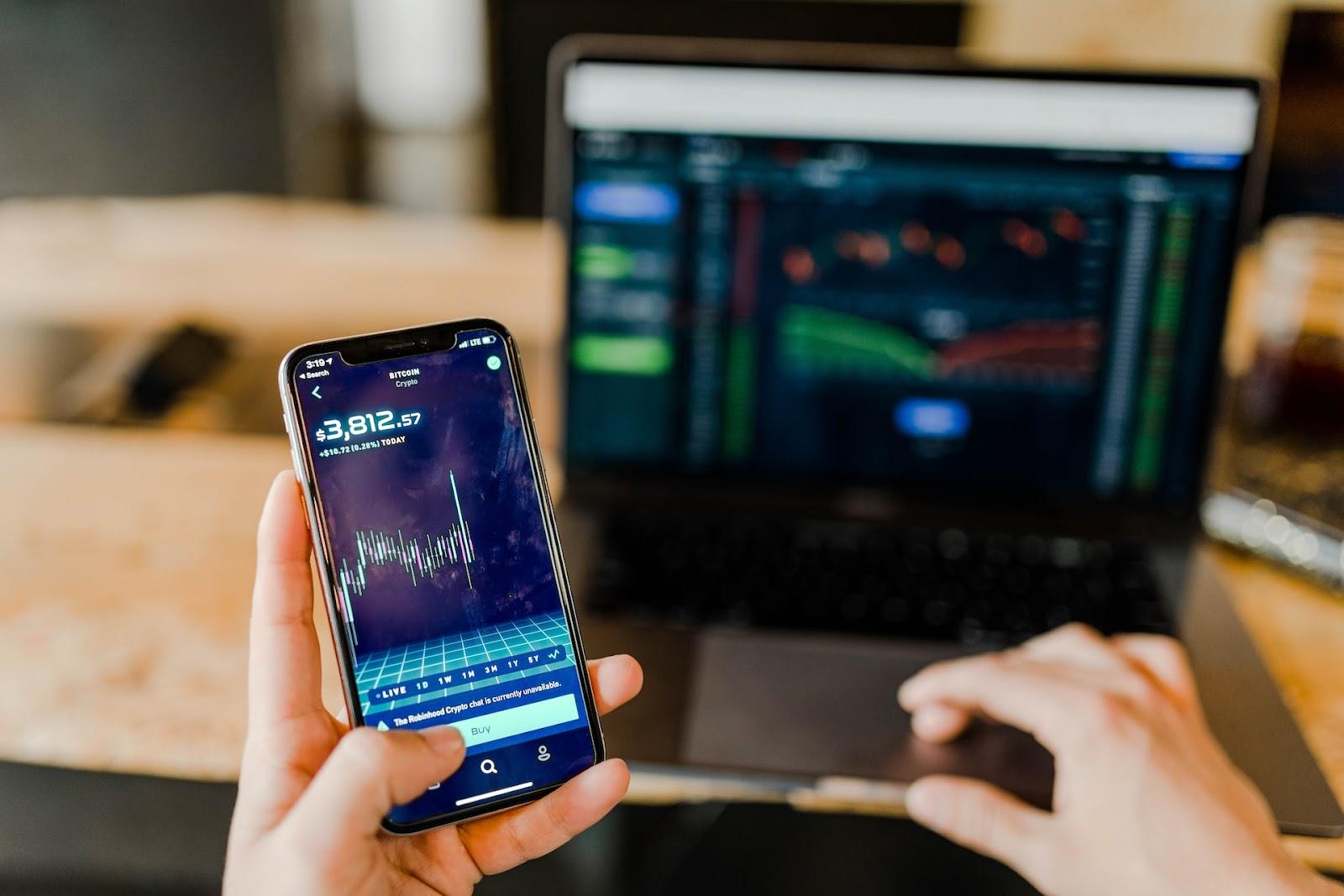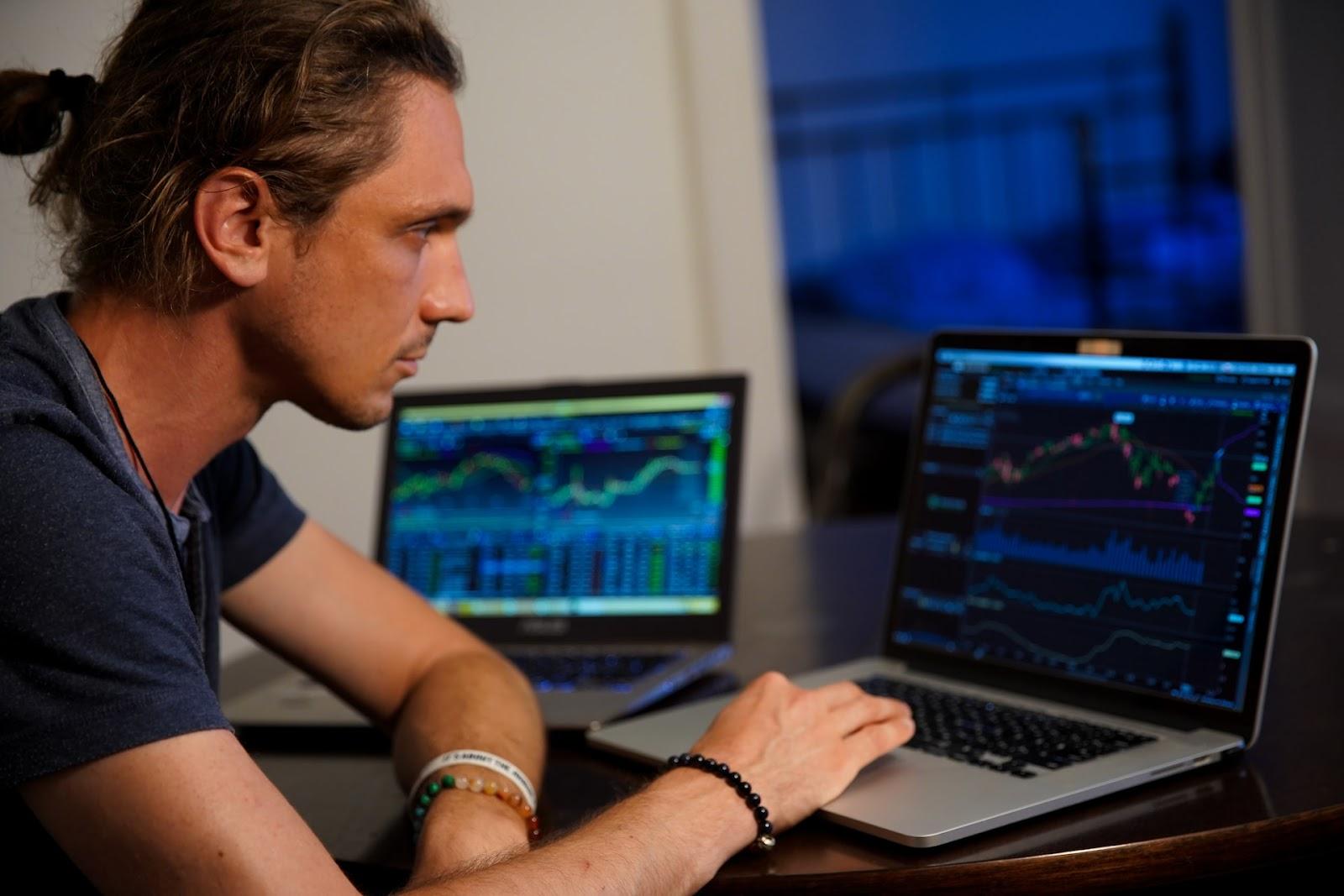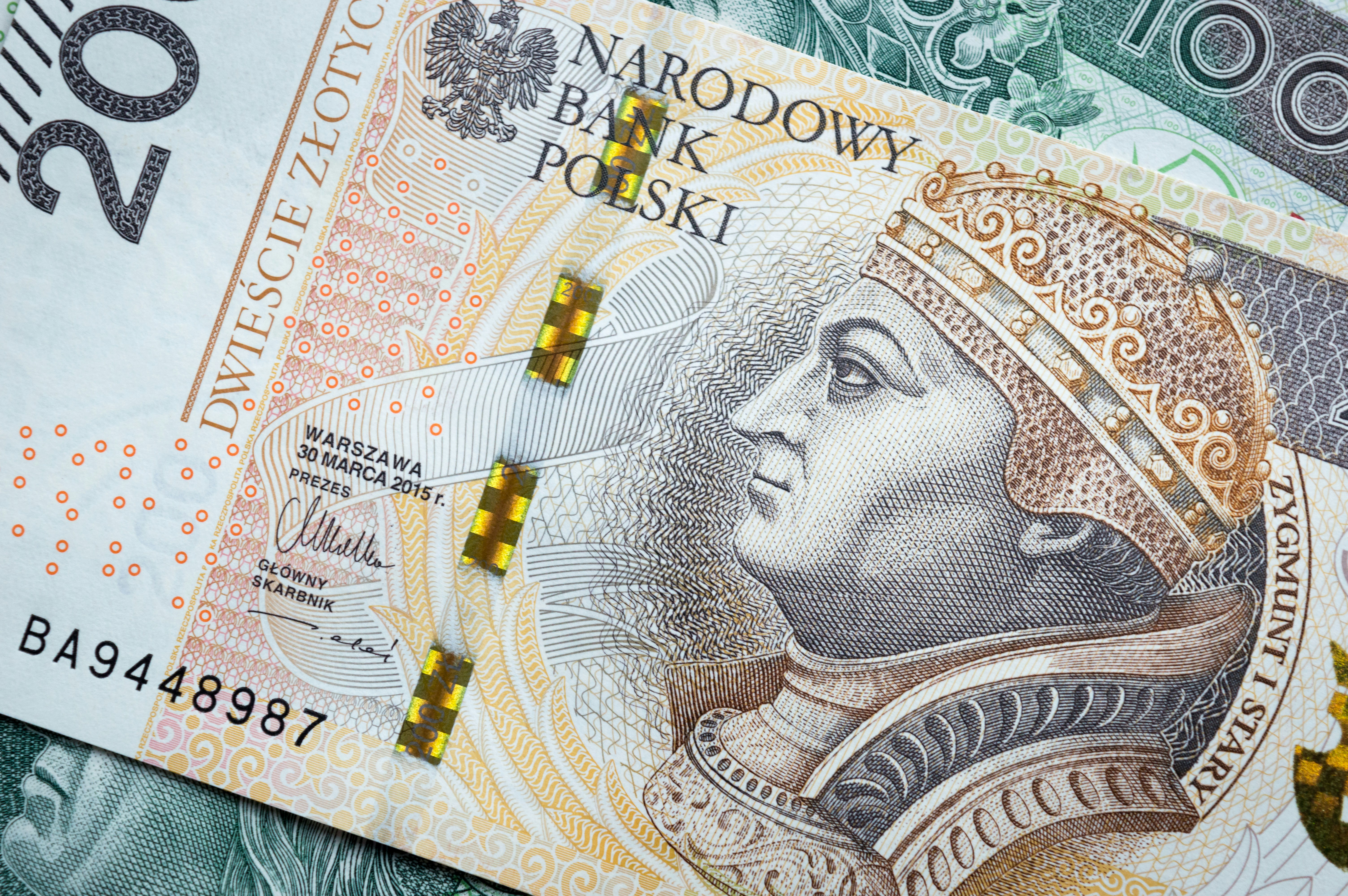The Structure of the Forex Market

Source: Austin Distel/Unsplash
Discover the structure of the Forex market with Just2Trade! In this comprehensive guide, we will provide you with all the essential information that professional traders need to know about this financial market: how it operates, its support and resistance levels, the dynamics of a bear market, the Forex market hours, and much more. Let's not waste any more time and delve into the world of market structure by reviewing the information we've compiled below.
Table of Contents
What Is Market Structure?
The market structure refers to the way prices move within a market. The fundamental support and resistance levels are identified by the swing highs and swing lows on the charts. These levels persist until they stop, and traders can use market structure as a trend-following tool to determine the trend, from bullish to bearish movements.
Price action, also known as market structure, is widely used in trading. This article focuses on the overall market movement, hence its name, "Market Structure." After gaining a solid understanding of the trend and predicted movements, traders can add additional criteria to their trade qualifications, such as volume, pivot points, moving averages, and others.
Types of Market Structure
A basic framework for understanding how markets work is provided by simple market structures. Because there are just three different types of market structures, it's easier to grasp them. Price Action, rather than taking into account past trends and how they might continue, is the only factor used to determine how the market moves.
Understanding when a shift takes place based on the time range you're watching is essential for successful trading. The market tends to move in one of three directions at any given moment:
Bull Trend;
Bear Trend;
Sideways Trend.
Markets tend to move in one of these three directions, and understanding market structure can help you determine if a trend will continue or change. Most often, the market moves in a sideways direction. It can also experience fast bursts in either direction within a range.
The bull trend is characterized by higher highs and higher lows, and the trend will continue until the asset price records a lower low. If a higher high is not recorded, the trend starts to weaken.
The bear trend is characterized by lower lows and lower highs, and will persist as long as lower highs are still being recorded. However, once a higher high is recorded, the trend will end. If the price starts to record equal or higher lows, it may be a sign that the trend is changing.
A trend with equal highs and lows is considered to be sideways. During this stage, the price is consolidating within a range, and long periods of consolidation can be followed by market movement. If the price moves away from the top or bottom of the range, the trend is broken and may signal the start of one of the two main trends.
Depending on the trading time frame selected, the disclaimer, market makeup, and price movements may fluctuate. If you're a day trader, you might notice one trend on a daily chart while seeing an entirely different one on an intraday chart. For instance, you can see a definite bull trend in Tesla's price increase (February 2020) on a daily chart. On the intraday charts, however, if you zoom in, you can notice a bearish trend after 5 minutes. The macrostructure and microstructure of an asset are distinguished from one another in this way.
Depending on the selected trading time frame, market conditions and price movements can vary. For example, a bull trend in an asset may be visible on a daily chart but appear as a bearish trend on an intraday chart if viewed closely. This distinction between the macrostructure and microstructure of an asset is due to the fluctuation of market conditions and price movements.

Source: Adam Nowakowski/Unsplash
Bullish Trend
The continuation of a bullish trend depends on regular higher highs and higher lows. There are two important factors to consider, and understanding how they change will help you identify when a trend is ending.
The first factor is the higher low aspect. Will the price make a higher low as it retraces following a rise? One scenario is that we see a level low, in which case the bull trend is still considered to be intact. However, this is a warning sign. Will that level allow the price to reach a new high? If it does, the trend will continue. If the advance fails to reach a new high, you must be cautious when the support is tested again.
For the trend to have a chance of continuing, the low must be at least as high as the previous high.
What Happens in a Bull Market?
The confidence of investors or traders is high during a bull market. The market is characterized by positive expectations and a sense of optimism about the prospects for continued success. A bull market typically occurs when the economy is performing well, with low unemployment, high GDP, and rising stock prices.
Bull markets are commonly associated with the stock market, but they can also occur in other financial markets, such as currencies, bonds, and commodities. When a bull market is in progress, all aspects of the economy tend to be performing well, with GDP growing, unemployment declining, and equity prices rising.
This leads to increased activity in the stock market and a strengthening of FX currencies like the Australian Dollar (AUD), New Zealand Dollar (NZD), and Canadian Dollar (CAD), as well as emerging market currencies. Conversely, a bull market usually results in a weakening of safe-haven currencies like the US dollar, Japanese yen, or Swiss franc (CHF).
Bearish Trend and Range Trend
A decreasing trend in the prices of a sector's stocks or a general decline in broad market indexes is known as a "Bearish Trend" in financial markets. The term is defined by investor pessimism about the possibility of declining market values.
If prices keep reaching new higher levels and any decline in price stops at a higher level than the previous decline, it signals an uptrend. A downtrend is characterized by a pattern of lower lows and lower highs, while a trading range is characterized by irregular highs and lows.
What Happens in a Bear Market?
A bear market occurs when there is a widespread decline in the values of securities, such as stocks, across the market. Investors become pessimistic about the prospect of future market performance, leading to a decrease in demand and a decline in prices. In this scenario, it is common for investors to sell their riskier assets and move towards safer investments such as gold or fixed-income securities.
Investors may also switch to safe-haven currencies, such as the US dollar (USD) and the Japanese yen (JPY), as these are seen as less risky than other currencies.
Market Structure Charts and Examples
We’ll use 4-hour (macro-structure view) and 10-minute (micro-structure view) examples as an illustration. In this section, we'll examine the S&P 500 futures market due to its continuous trading throughout the night, which prevents price gaps.
A 4-hour chart of the S&P 500 is shown below. The trend is clearly upward, and we've identified some strong levels of support and resistance based on the location of the price (above or below these levels). The goal is to identify these levels in the 10-minute chart, and also keep an eye out for impulse moves that could lead to new highs as the bull trend reverses.

Support and Resistance Levels
Depending on what you're trading, support and resistance levels can be drawn on a variety of different time scales.
For instance, if you plan to swing trade, it is advised to start by looking at a broader time range and drawing your key levels on a weekly chart as a starting point. To refine those levels, investigate the daily, hourly, or 4-hour cycles.
If you're day trading, begin by drawing your support and resistance levels on an hourly chart. Then continue with the 10-minute and 5-minute charts to fine-tune the levels and identify any additional crucial levels you may have missed.
Moving Averages
You can increase the number of tools in your trading toolbox, including moving averages and indicators that can help you identify levels (pivot points) and the general trend.
Moving averages are a useful trading tool, but it depends on the timeframe and whether you're swing trading or day trading.
Swing Traders:
Day Traders:
10-Min Chart: 34/50 cloud with exponential moving average, 5/12 moving average exponential cloud.
5-Min Chart: 20 exponential moving average.
Remember that these tools and indicators shouldn't be used in isolation; rather, they should be used in conjunction with market structure.
Market Structure in Different Markets
There are many options for using different tools when it comes to other marketplaces, such as the futures market. One important tool for understanding the general institutional attitude is order flow techniques, which are commonly used by professional traders. However, market structure is still the foundation of day trading and even swing trading in the futures market. Once you understand how the price of one asset moves, you'll have a new perspective and be able to comprehend the charts of any asset.
Trading Spot FX is Decentralized
Because there is never a fixed price for a particular currency on the Forex market, prices offered by different currency dealers can vary.
This decentralization may seem intimidating at first, but it is actually one of the remarkable features of the currency market.
Due to the size of the market and intense competition among vendors, you are almost guaranteed to receive the best deal.
Another great aspect of the Forex market is its accessibility from anywhere, much like trading rare handbags or sneakers.
The FX Ladder
A ladder-like arrangement of FX market participants is possible. The interbank market is situated at the top of the FX market hierarchy.
This market's participants, which include the largest banks in the world, trade either bilaterally – directly with each other – or through voice or electronic brokers, such as EBS Market and Reuters Matching.
The rates offered by any bank in the interbank market are visible to all other banks, but this does not necessarily mean that anyone can execute trades at those rates.
The existing credit relationship between the trading parties will play a significant role in determining the rates, just like in real life.
It is similar to obtaining a loan from your local bank. The better your credit standing and reputation with the bank, the better interest rates and loan amount you can obtain.

Market Participants
The FX rates are determined by the operations of some of the largest institutions, including HSBC, Citigroup, RBS, Deutsche Bank, BNP Paribas, and Barclays Bank. These big banks are the major players in cross-border FX transactions. They have a thorough understanding of supply and demand across the market and are aware of current conditions. Their large-scale operations determine the bid-ask spread that reaches the base of the pyramid.
Currency Pair
The vast selection of currency pairs in your trading platform may leave you feeling both overwhelmed and confused if you are new to the Forex market and have just started trading Forex online (such as on platforms like MetaTrader4, etc.). What are the best currency pairs to trade? The answers are not simple, as they depend on the trader, the platform, the exchange (or OTC market) they are trading on, and other factors. Instead, you should take the time to evaluate multiple currency pairs in relation to your personal trading strategy to find the most favorable Forex pairs to trade with.
Foreign exchange trading involves simultaneous purchases of one currency (bid/buyer) and sales of another currency (ask/seller), resulting in a trade between the two currencies. The configuration of currency pairs that can be traded is standardized globally. For example, a quote of EUR/USD 1.25 means that one Euro is worth $1.25. The US dollar is the counter currency in this case, and the Euro (EUR) is the base currency.
Commonly Used Currency Pair
The US dollar is widely used, dominant, and powerful, with the size of the US economy being the largest in the world. Most currency exchange transactions globally use the US dollar as their base or reference currency. The most popular (high liquidity) currency pairs on the Forex market are listed below, and most foreign exchange transactions involve one or more of these currencies. The ideal currency to trade depends on various criteria, so not every trader will find this to be the best option:
EUR/USD (Euro – US Dollar)
GBP/USD (British Pound – US Dollar)
USD/JPY (US Dollar – Japanese Yen)
USD/CHF (US Dollar – Swiss Franc)
EUR/JPY (Euro – Japanese Yen)
USD/CAD (US Dollar – Canadian Dollar)
AUD/USD (Australian Dollar – US Dollar)
The values of the currency pairs fluctuate along with the prices of these major currencies, causing the volume of trade between the two countries to change. Additionally, these pairs represent powerful economic nations that engage in a lot of international trade, and as a result, are traded frequently, making them volatile during the day and reducing the spread.
The Bid-Ask Spread
The spread represents the difference in price between the bid and ask prices. The bid price is the exchange rate at which you can sell a currency pair, and the ask price is the exchange rate at which you can buy a currency pair, such as EUR/USD.
Every time you trade a currency pair, two prices will be displayed. The bid price is the lower price, which represents the price that your broker is willing to pay for the base currency (such as USD) in exchange for the counter currency (such as INR). On the other hand, the ask price, which is the higher price, represents the price at which the broker is willing to sell the base currency in exchange for the counter currency.
For example, in the USD/INR currency pair, the bid price might be 67.2625, while the ask price might be 67.2650. This spread between the bid and ask prices is depicted in the accompanying graphic.

Hedging
In essence, hedging is a strategy meant to lower potential risks in the event that prices move unfavorably. It can be compared to an insurance policy, which protects against specific risks.
Traders and investors often open an offsetting position in a similar security to hedge against potential losses from future price changes, especially when they are uncertain about the direction the market will take. Hedging should minimize risks to a practical minimum and result in paying only the broker's commission.

Source: Markus Spiske/Unsplash
Frequently Asked Questions (FAQs)
Still have any questions about the Forex market structure? Then take a closer look at our FAQ list below – you may find the answers to your outstanding questions.
What is the lot size?
A lot is a unit used to express the value of a transaction in the Forex market. Your trade's value is determined by the lot size multiplied by the number of lots.
In Forex trading, there are various lot sizes, including mini (10,000 units), micro (1,000 units), nano (100 units), and standard (100,000 units) lot sizes. The standard lot size is the most common, representing 100,000 units of the base currency in a Forex transaction.
What is long in Forex trading?
"Going long" refers to the act of purchasing (buying) a currency pair in Forex trading. When a trader is bullish on a currency pair and goes long, they buy the first currency and sell the second currency, indicating that they have a bearish view on the second currency.
What is short in Forex trading?
Shorting a currency pair in Forex trading means selling the first currency and buying the second currency in the expectation that the first currency's value will fall in the future.
What are pending orders in Forex trading?
In Forex trading, a pending order is an order that hasn't been executed and has not yet turned into a trade. Pending orders often have a limit set, meaning that if the price of a financial instrument does not reach a specific level, the order will not be executed.
What are leverage and margin?
In Forex trading, leverage refers to the ability to manage a large sum of money using only a small portion of your own funds, with the rest being borrowed.
Margin, on the other hand, refers to the amount of money required by your broker as a good-faith deposit to open a trade


